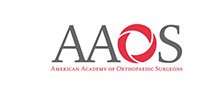The shoulder is a complex arrangement of structures working together to provide the complex movement necessary for daily life. Unfortunately, the increased mobility comes at the expense of stability. Three bones (clavicle, scapula and humerus), and many ligaments, tendons, and muscles, work together to give you all the motion and stability of your shoulder. The bones of the shoulder that make up the glenohumeral joint, the humerus and the scapula, are like a golf ball on a golf tee and the muscles and tendons of the shoulder work together to keep the golf ball on the tee. Certain work or sports activities can put increased demands on the shoulder, and injury will usually occur when the limits of movement are exceeded and/or the individual structures are overloaded or overused.
What happened?
Shoulder separations (Acromioclavicular joint) are common among an active population. This injury happens when the collar bone (Clavicle) separates from the top of the shoulder blade (acromion). The acromioclavicular ligaments and the coracoclavicular ligaments help hold this joint together, when these ligaments are injured the stability of the joint may be in jeopardy. Most injuries to this joint are sustained from a fall directly onto the shoulder or a direct blow to the shoulder. We commonly see this in football and hockey and in cyclists that fall over the handlebars. When the shoulder hits the ground or is hit, the force pushes the scapula down. The clavicle cannot move as much as the scapula so, something has to give way and the acromioclavicular joint is compromised.
What does it feel like?
There will be pain over the top of the shoulder. You may be able to see the clavicle (collar bone) lifted from the acromion in more severe injuries. You will have pain and maybe some popping with motion of your arm over your head or across your body. There may be some swelling and bruising in the area. You will not be able to sleep on that side.
So how bad is it?
The severity of the injury will depend on what structures of the acromioclavicular joint are damaged. Acromioclavicular injuries are graded on a scale of 1 to 5.
Grade 1: Xrays may be normal. The acromioclavicular ligaments have been stretched or injured microscopically.
Grade 2: Xrays may show some slight disruption or subluxation of the joint compared to the other side. The acromioclavicular ligaments and possibly the coracoclavicular ligaments are damaged.
Grade 3: Xrays will show obvious change in the joint. The acromioclavicular and coracoclavicular ligaments have been torn.
Grade 4: Xrays will show that the clavicle is displaced posteriorly. This is very similar to a grade 3 injury with posterior displacement. These will most likely need to be surgically fixed.
Grade 5: Xrays will show the clavicle displaced superiorly more than 100%. The ligaments have all been torn. This will require surgery to stabilize the joint.
What can I expect when I see a doctor?
Diagnosis of a shoulder separation is done by examination and also some testing. An exam will be done where your shoulder is taken through range of motion and the physician will feel the shoulder to see where you hurt. The degree of the injury will be determined with x-rays and maybe an MRI. This will tell your physician how severe the injury is or how unstable the joint might be. This helps to determine the best treatment for you to get back to your normal activities.
Now What?
Treatment for this injury will depend on your activity level and also on the degree of your injury. Less severe of an injury will usually mean more conservative treatment, such as a sling for a few weeks and some physical therapy. In more extreme cases or in higher level athletes we may have to fix the joint surgically.
When will I be healed?
If it is determined that your injury does not require surgery then, you will be paired up with a physical therapist to work on range of motion and strengthening. It can take anywhere from 6 to 12 weeks until your injury is completely healed.
If it is determined that your injury will require surgery, you will be in a sling for a longer period of time that nonsurgical patients. You generally do not begin range of motion exercises until 4-6 weeks after surgery. You may not begin active range of motion on your own until 2 months after surgery and strengthening at 3 months post operative.






